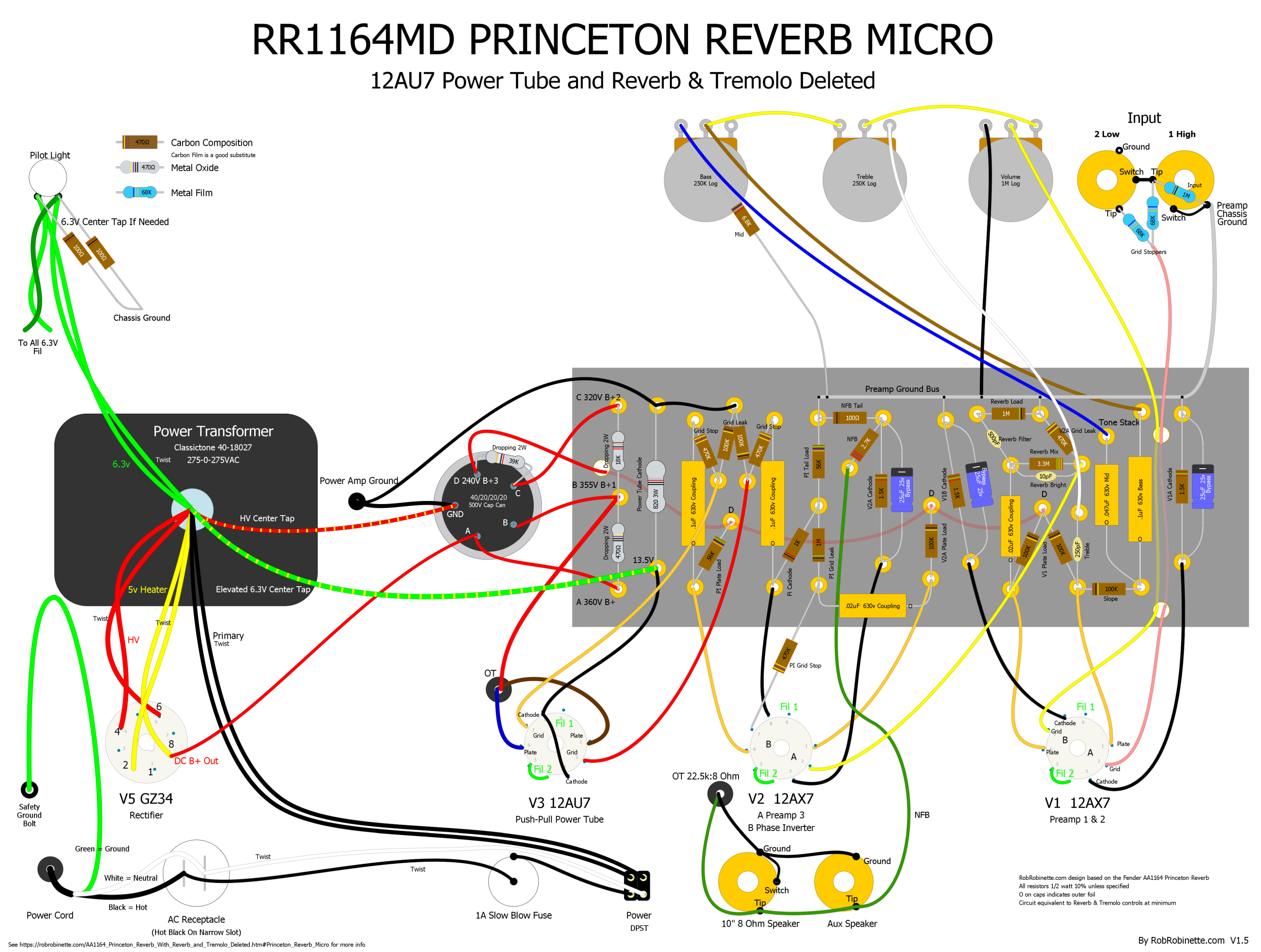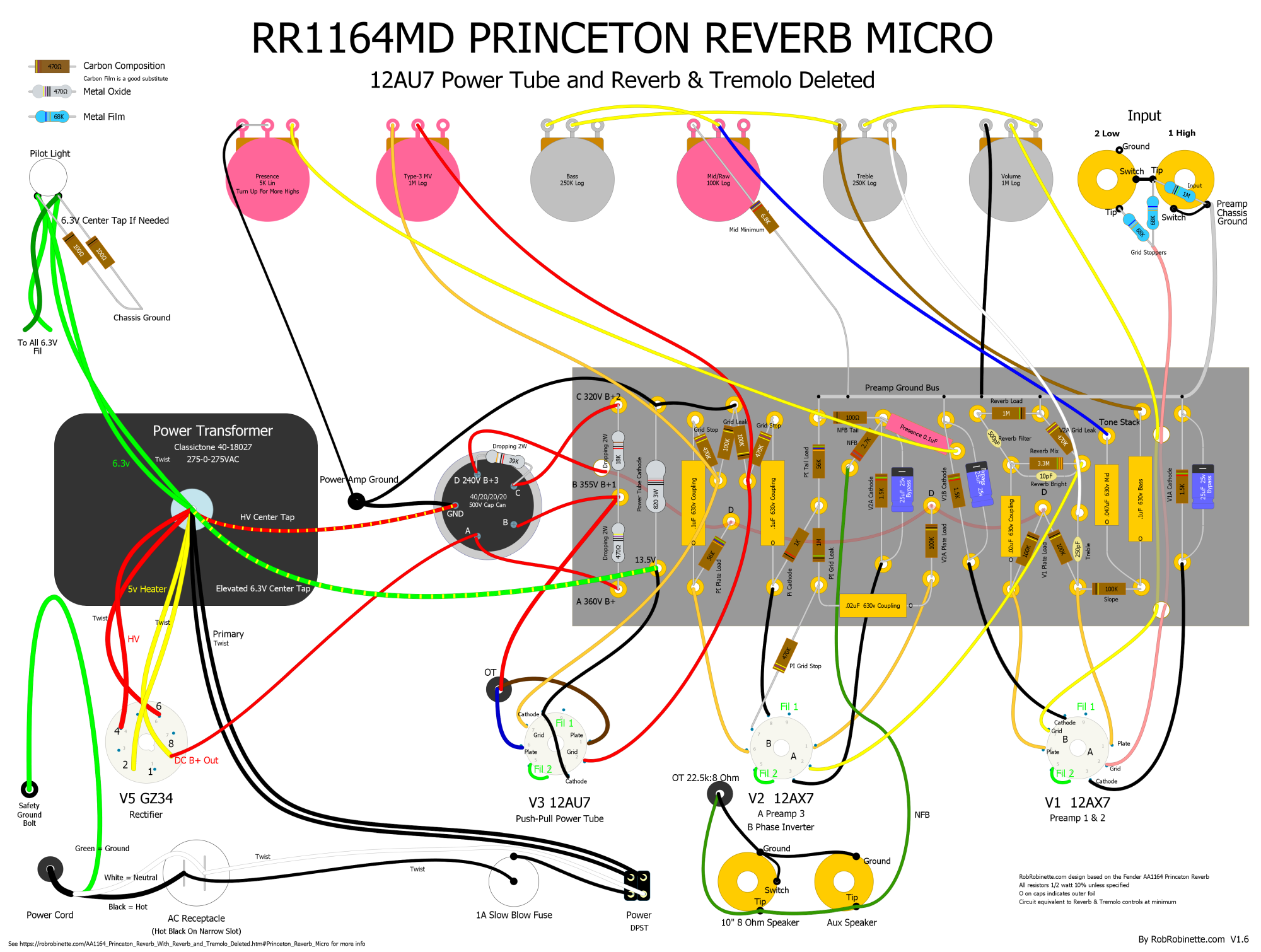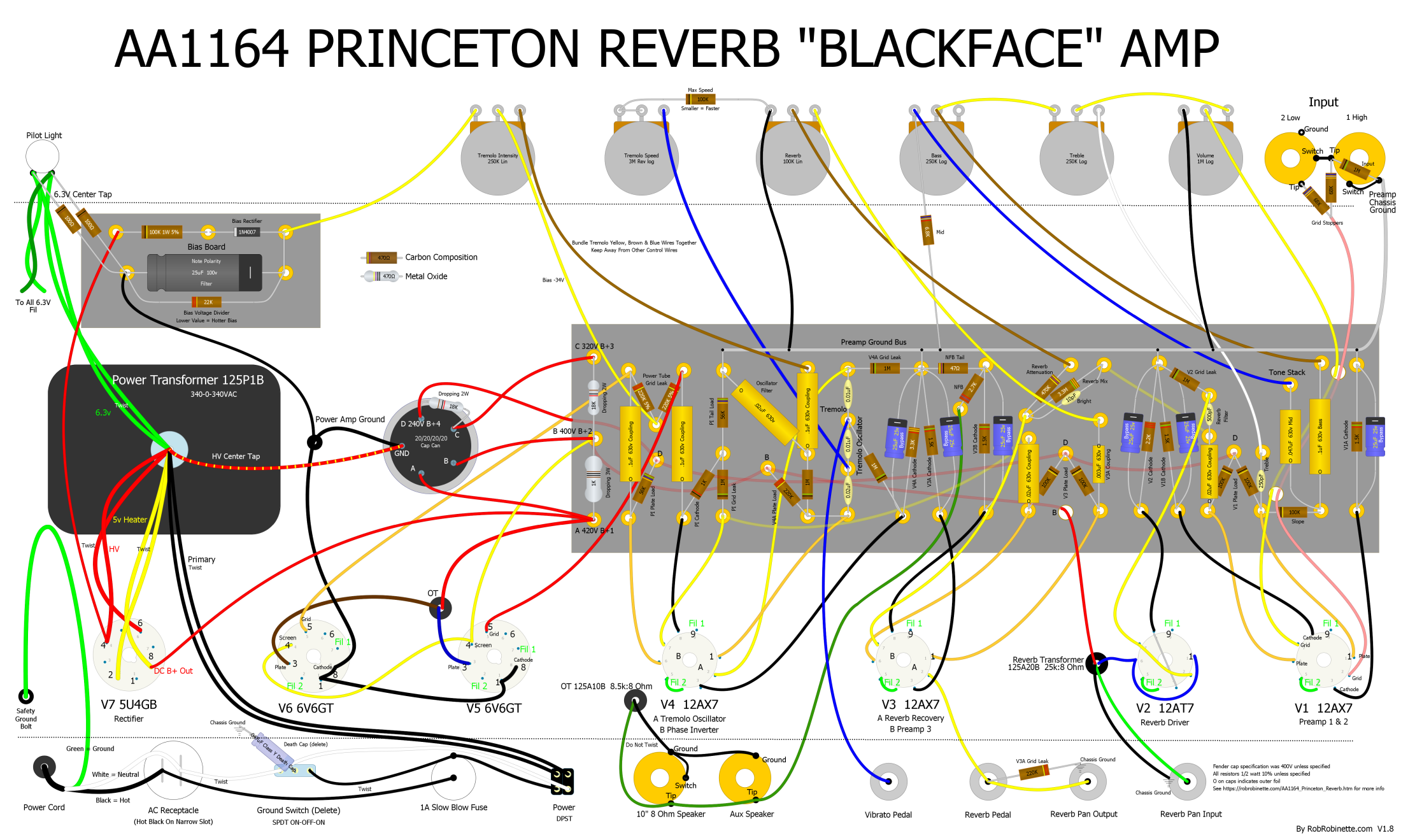Princeton Reverb Micro (with reverb and tremolo deleted)
By Rob Robinette
Have comments or corrections? Email rob at: robinette at comcast dot net
The AA164 blackface Princeton Reverb is one of the greatest amps of all time but it is a complex amp to build and troubleshoot so I created the Princeton Reverb With Tremolo and Reverb Deleted which gives us the exact same tone as a Princeton Reverb with the reverb and tremolo turned full down. This is the 1 watt micro version of that amp with bedroom volume output. It's a perfect practice and recording amp. Mic it up and you can play it anywhere. You can add a quality reverb and tremolo pedal like the Strymon Flint and you have a simple to build and maintain Princeton Reverb Micro.
The simplest way to build this amp is to buy a Princeton Reverb small parts kit but substitute the circuit board shown below in the layout for the kit circuit board. You'll also need a 275-0-275v power transformer such as the Classictone 40-18027. The output transformer is a common 22.5K:8 ohm output transformer such as the Hammond 125B (or 125C for less compression and more volume but I believe the 125B will give the truest Princeton Reverb tone). Use secondary wires 2 & 4 to give 22500:8 ohm load impedance for 8 ohm speaker..
You can upload the Hoffman Circuit Board file to HoffmanAmps.com DIY File Analyzer and Doug will make an eyelet or turret board for you for a very reasonable price. I really like the Mojotone Princeton Reverb Small Parts Kit.
I recommend using a blackface or silverface Princeton Reverb chassis and cab. A custom faceplate can be ordered to cover the excess control holes or you can add a Mid tone control, Presence control, master volume or other mods to fill the holes.
Two of the three voltage dropping resistors were changed. The first was lowered from 1k to 470 to get the proper voltage drop using the 275-0-275v power transformer. The third was increased from 18k to 39k to compensate for the tiny power tube and deletion of the four reverb and tremolo triodes.
If you would like to use a 12 inch speaker you can always build this circuit into a blackface/silverface Deluxe or Deluxe Reverb chassis.
I added a 470k grid stopper to the phase inverter. It won't affect the clean tone but will prevent nasty "double frequency" phase inverter distortion when the amp is pushed hard. It will also make the amp more pedal friendly too.
I also added power tube grid stopper resistors which form a voltage divider with the power tube grid leaks to attenuate the signal hitting the tiny power tube grids.
The negative feedback tail resistor is increased from 47 to 100 ohms to compensate for the low voltage of the output transformer secondary.
Suggested Speaker: Weber and I recommend their 10F150T (8 ohm, 25 watts, light dope) for Princeton Reverbs.
Weber Note:
If
you use no pedals for dirt and you want the speaker to break up a little: 10F150T,
8 ohm,
25w,
light dope
If
you use pedals for dirt or you want the speaker to stay cleaner: 10F150T,
8 ohm,
50w,
light dope
Weber on Dope:
Put simply: the higher gain you use, the more dope you should have on your speaker.
You can edit this faceplate svg file in Inkscape (freeware) to match your Princeton Reverb Micro.
I plan to add a headphone out jack option like in the Bassman Micro.
12AU7 true push-pull power tube for 1 watt of bedroom volume bliss.

A cathode biased 12AU7 power tube is used for 1 watt of output power. Power tube grid stop resistors are added and are placed to form a voltage divider with the grid leak resistors to attenuate the signal hitting the power tube grid to prevent excessive overdrive. The negative feedback tail resistor is adjusted to provide the same level of NFB from the lower voltage output transformer secondary. A GZ34 rectifier tube is used to work with the 275-0-275v power transformer primary. JJ 40/20/20/20uF 500v cap can is recommended.
Bill of Materials
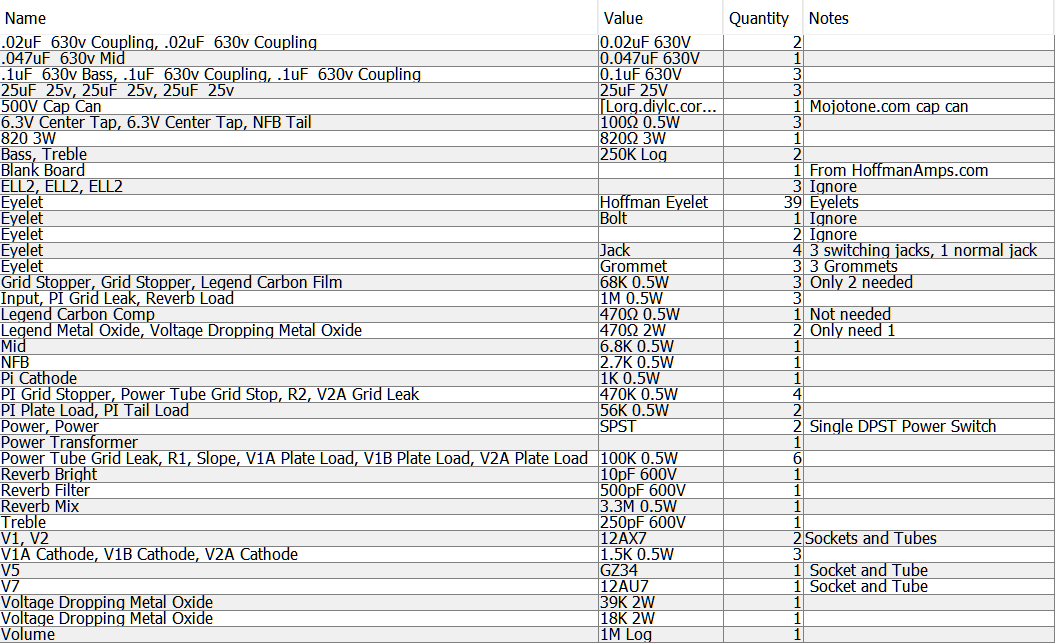
You'll also need a Princeton Reverb chassis, output transformer (Hammond 125B), cab, speaker and power cord.
Master Volume, Mid/Raw Pot, Presence Control Added
The Master Volume is a simple Type-3. As you turn it down the two signals from the phase inverter are mixed together which attenuates the signal. The Mid/Raw tone control at full down is normal Princeton Reverb. As you turn it up the blackface mid scoop is removed and mids become much more prominent. At full up you're in tweed territory.
The Original Princeton Reverb
Every component function is listed. Click on the layout to see the high resolution layout. Download the pdf here and the DIYLC file here.
Annotated Schematic
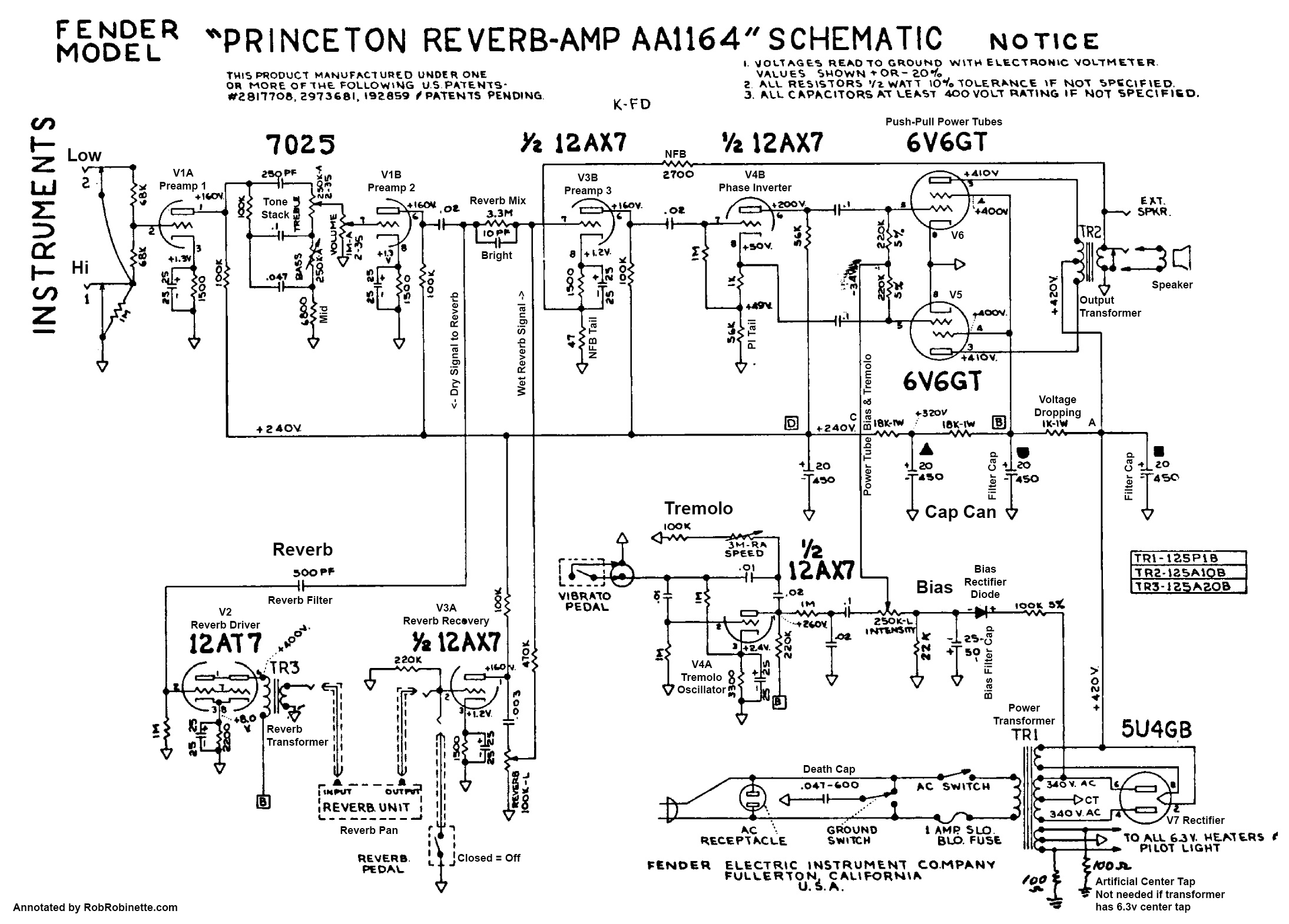
Princeton Reverb Chassis By Marcus Albrecht

Original Princeton Reverb Fender Layout

The No-Reverb Blackface Princeton

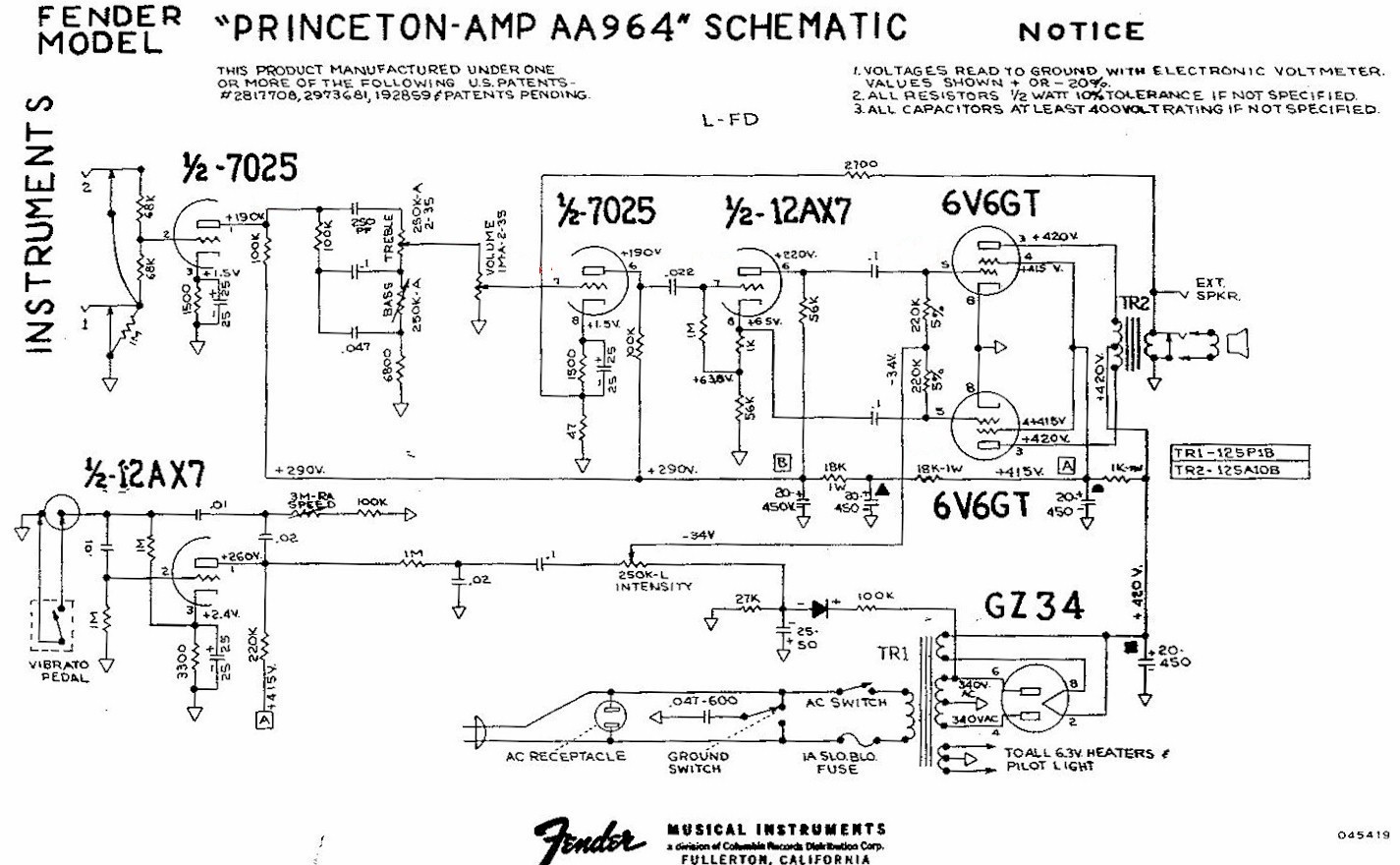
The non-reverb Princeton has only two preamp gain stages versus the Princeton Reverb's three so they are very different amps.


